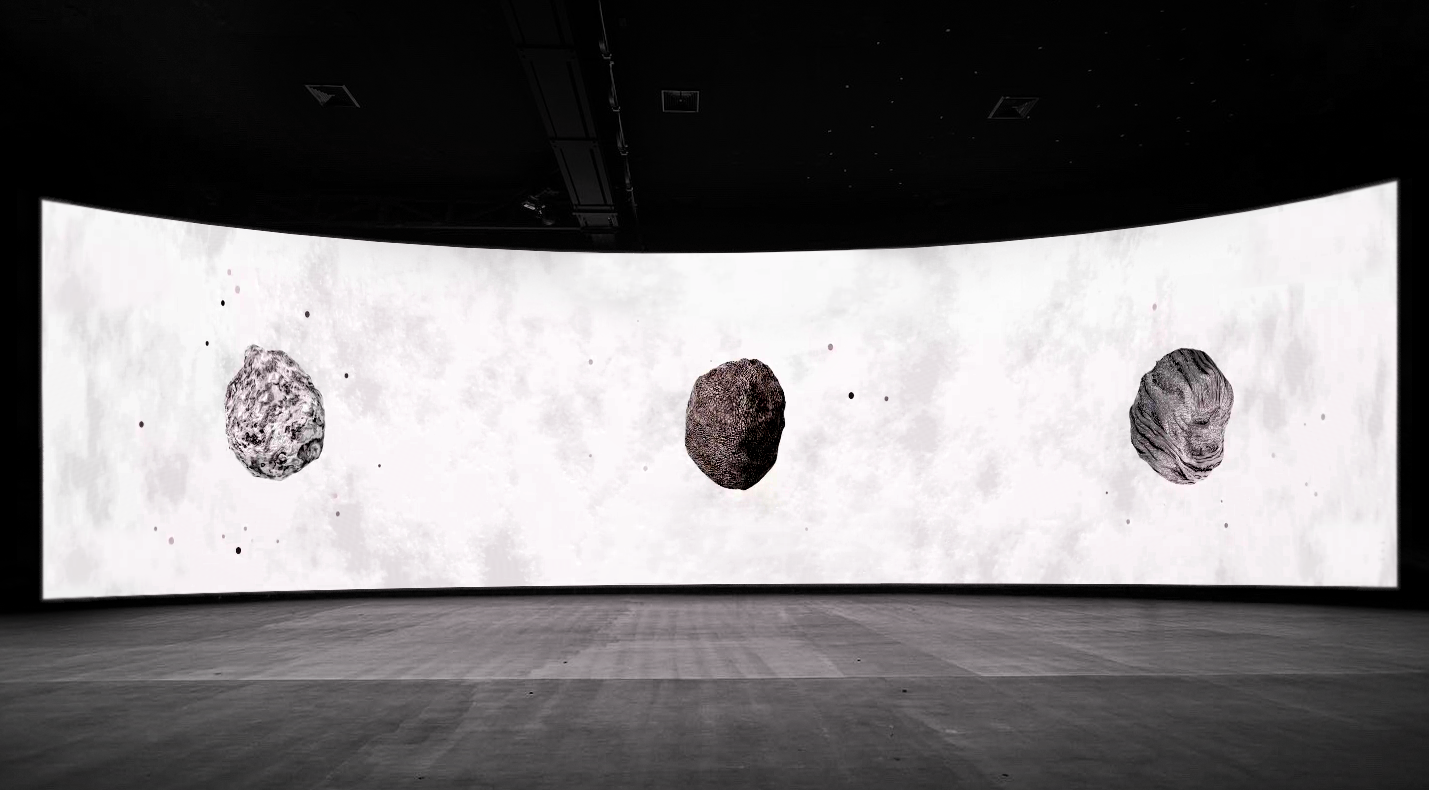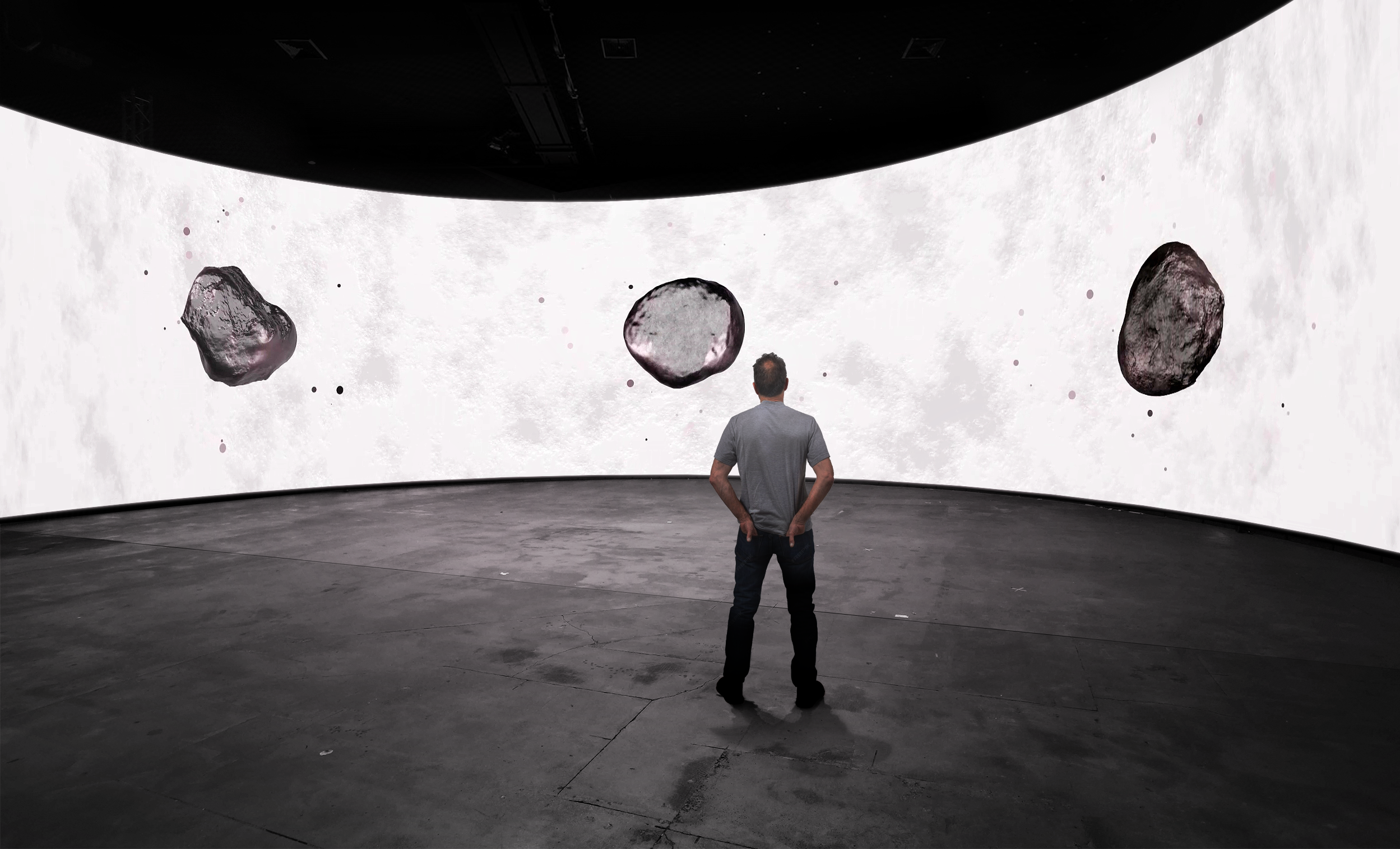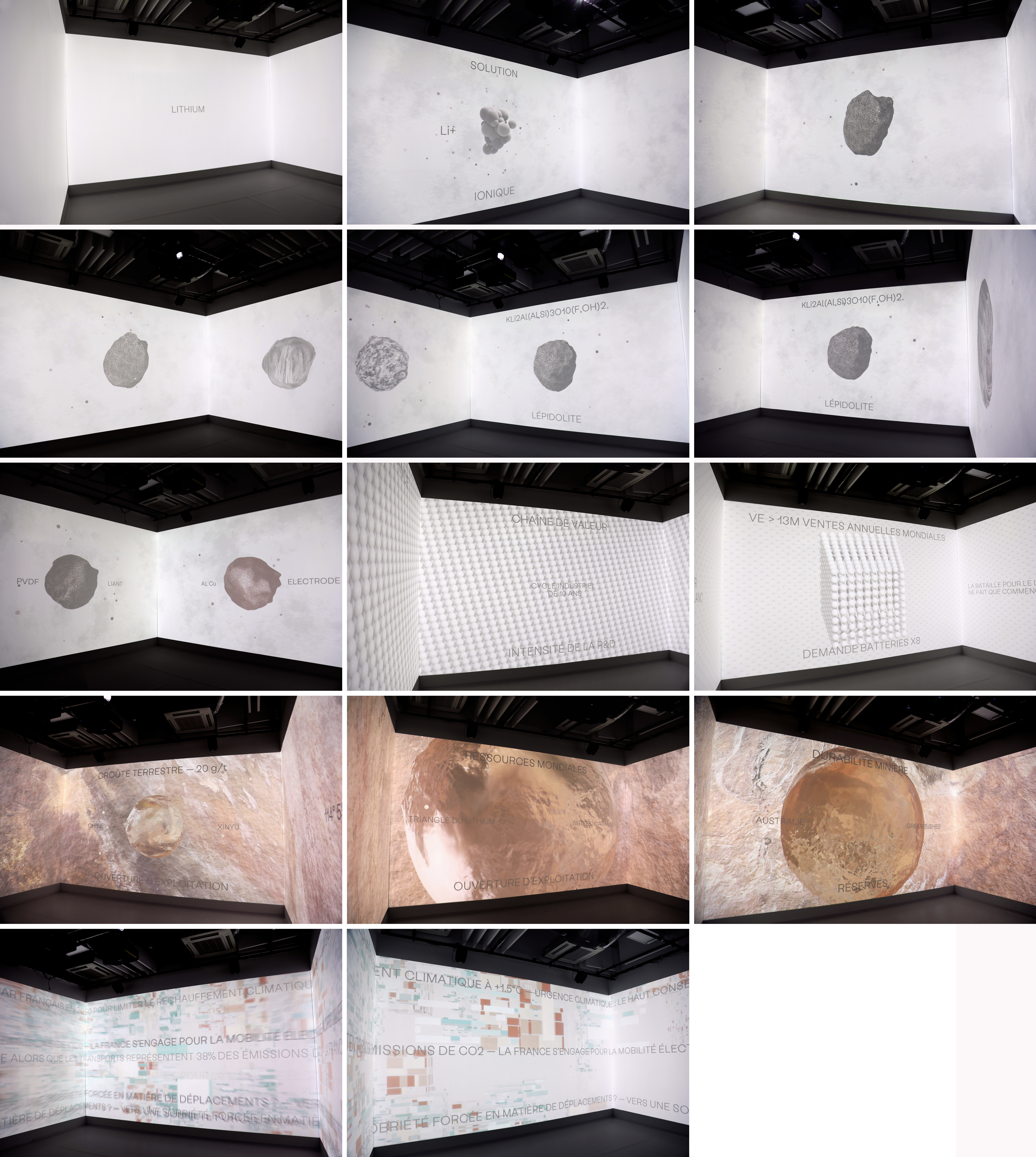Very large data materialization dealing with critical matters (Curved Led Display and VR CAVE). First sequence dedicated to Lithium.
Commissioned by The French Atomic Energy and Alternative Energy Commission (Commissariat à l’énergie atomique et aux énergies alternatives — CEA Grenoble), Dioramat1—1.Lithium (in French version only) is the first in a series of very large-format mixed data materializations allotted to the subject of critical materials/critical minerals for energy. Through a “narrative flow” (data flow/data story) combining words, images and sounds, the key issue was to address the different levels2 of “dependence” encountered by industries in various sectors using Lithium as a raw/primary resource, as well as the different stages/states/degrees of criticality of the latter. Comprising four chapters — (1.) Matter and Transformation, (2.) Geography and Exploitation, (3.) Industry and Tension, (4.) Connection and Transition — the Dioramat—1.Lithium sequence deploys an original graphic environment (a kind of ambient perceptual “milieu”, in James Gibson’s sense) where representations and figurations, metaphors and allegories intermingle. With this datadesign project, we intended to approach in a sensitive way (between sensation and impression, perception and understanding), chapter after chapter, the complex and structural linkage between the different domains, factors and degrees of criticality of the said material. So, as the environment is defined, as the shapes are formed and refined, the viewer gains access to different levels (or layers) of representation of both the material’s properties and specificities, its uses and applications, and the economic, political and ecological determinants to which it is directly linked.
1. In reference to the dioramas described by Willard Cope Brinton in Graphic presentation (1939), a digital update has never been fully thought through.
2. Referring to the various fields selected (and possibly to several of the related sectors): geology, economics, ecology, ethics, geopolitics, politics (etc.).
Sur une commande du Commissariat à l’énergie atomique et aux énergies alternatives (CEA Grenoble), Dioramat1—1.Lithium (matériaux critiques) est le premier volet d’une série de matérialisation de données mixtes très grand-format abordant, au travers d’un « flux narratif » (data flow/data story) croisant mots, images et sons, les différents niveaux de “dépendance” que rencontrent certains domaines clés2 mobilisant le Lithium comme ressource première/principale ainsi que les différents stades/états/degrés de criticité de cette dernière. Composée de quatre chapitres — (1.) Matière et Transformation, (2.) Géographie et Exploitation, (3.) Industrie et Tension, (4.) Connexion et Transition — la séquence Dioramat—1.Lithium déploie un environnement graphique (sorte de milieu perceptif « ambiant », au sens de James Gibson) où s’entremêle représentations et figurations, métaphores et allégories. Tout l’enjeu est ici d’approcher de façon sensible (entre sensation et impression, appréhension et compréhension), chapitre après chapitre, également tableau après tableau, ce qui relie les différents domaines, facteurs et de degrés de criticité dudit matériau. Aussi, à mesure que l’environnement se définit, que les formes se forment, s’affinent, le regardeur accède à différents niveaux de représentation tant des propriétés et spécificités du matériau, de ses emplois et usages que des déterminants économiques, politiques, écologiques auxquels il est directement lié.
1. En référence aux dioramas fort bien décrits par Willard Cope Brinton in Graphic presentation (1939), dont il n’a jamais été pleinement pensé, dans son principe, une réactualisation numérique.
2. Renvoyant aux différents champs retenus (et possiblement à plusieurs des secteurs afférents) : géologie, économie, écologie, éthique, géopolitique, politique (etc.)
Images












Video export
Installation


In a VR CAVE (CEA Lab demonstrator)

Preliminary Design Phase







Team
Script:
David Bihanic, Joël Rodière, Camille biros Pauline Bureau, Caroline Rossi (University of Grenoble Alpes — ILCEA4 laboratory),
Yann Blanchi , Tiana Delhome, Nicolas Géraud (CEA-DRT — Technological Research Department),
Art direction:
David Bihanic,
3D rendering and development:
Joël Rodière (Trafik),
Sound design and editing:
David Bihanic,
Voice production:
Pauline Bureau, Christine Martinez,
Scientific advisor:
Valentin Vinci (European Synchrotron Radiation Facility — ESRF),
Production:
CEA — Arts & Science Workshop.
To mention: David Bihanic, Trafik, UGA, CEA “Dioramat—1.Lithium”, Avril 2024.